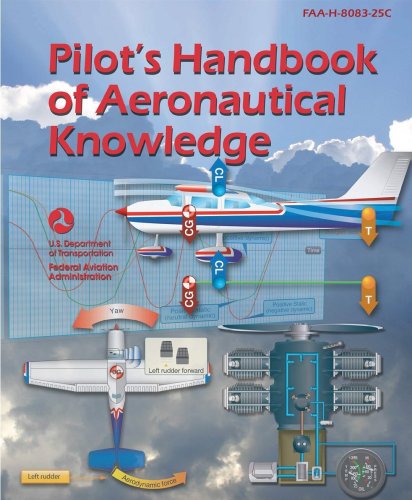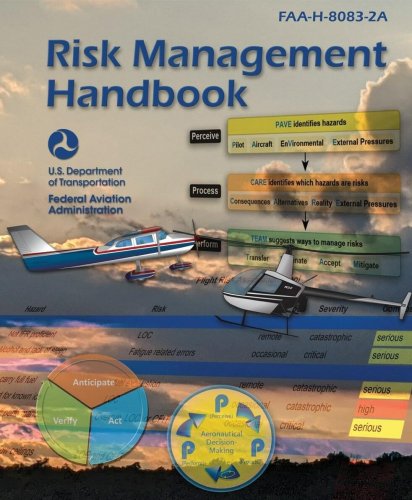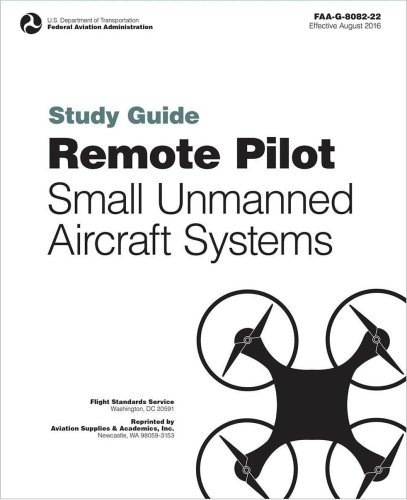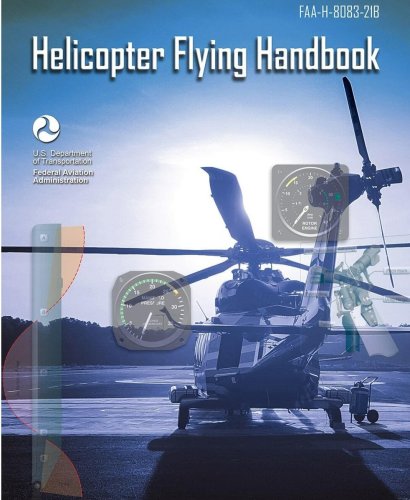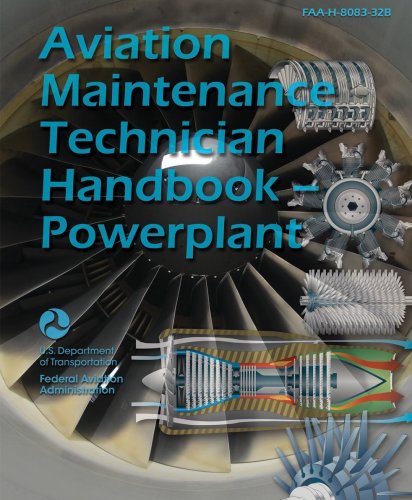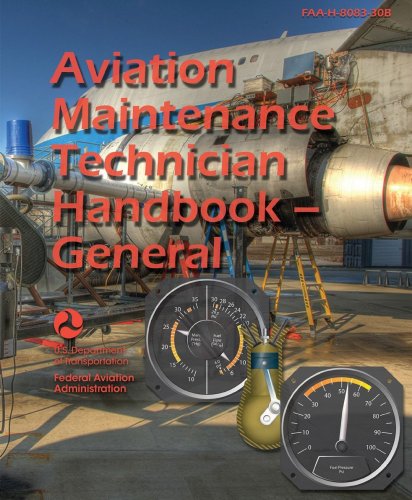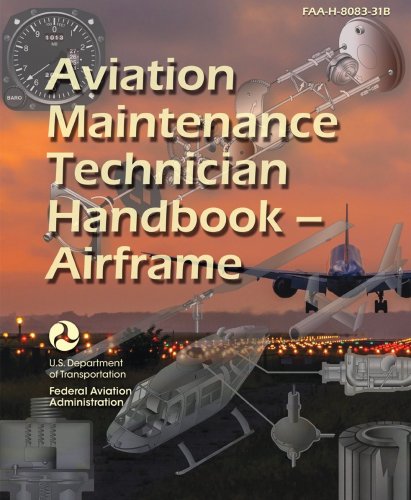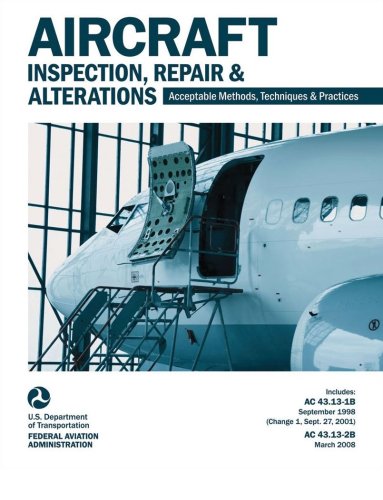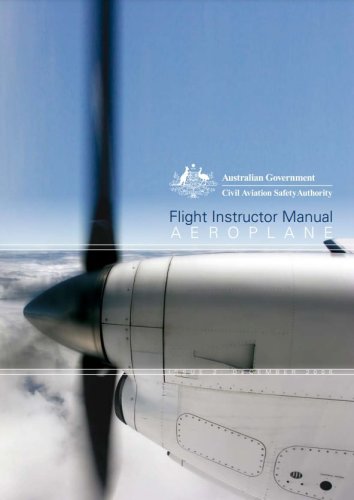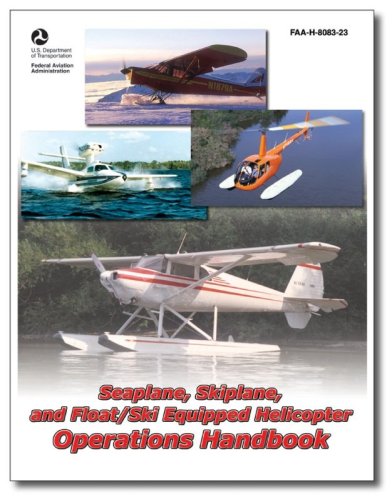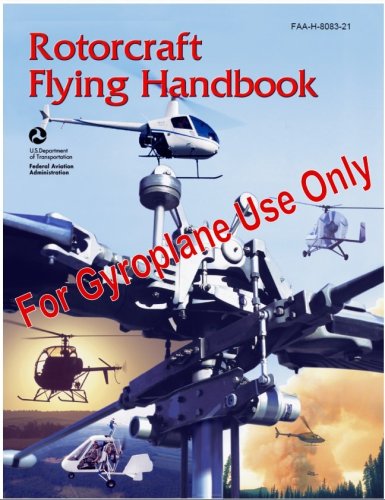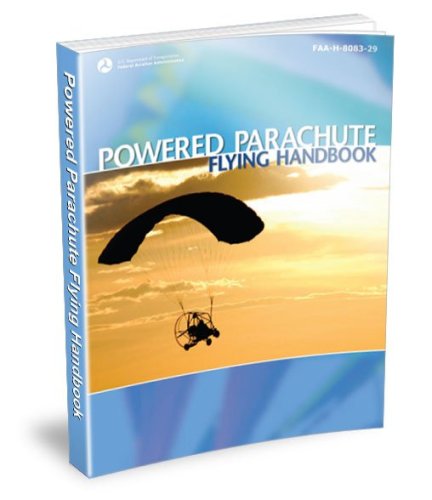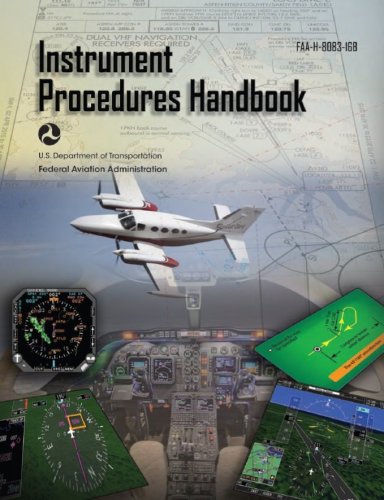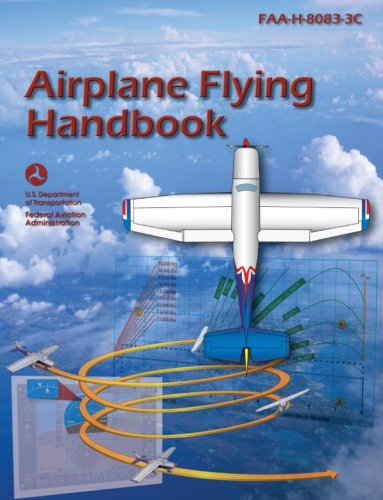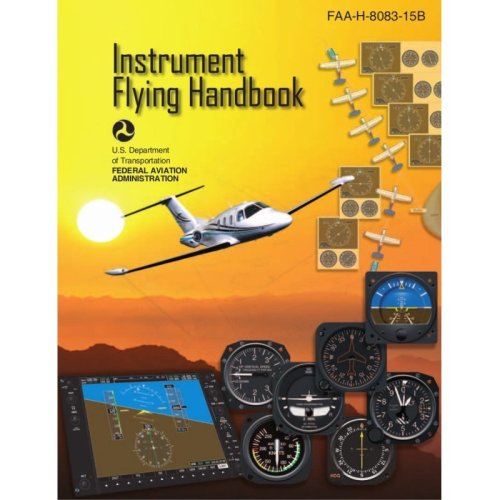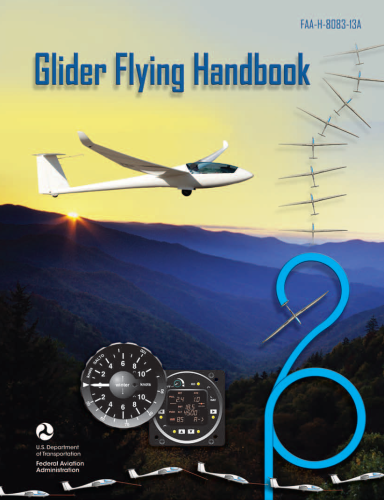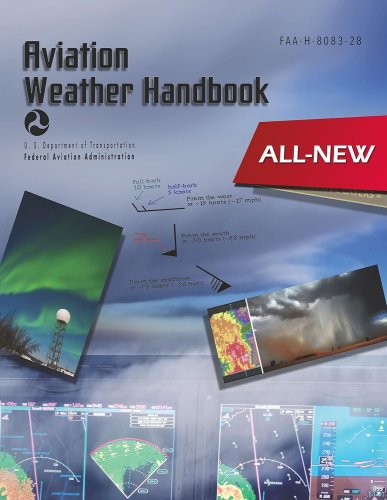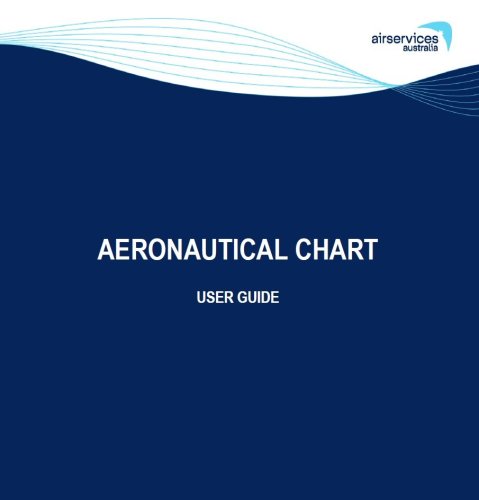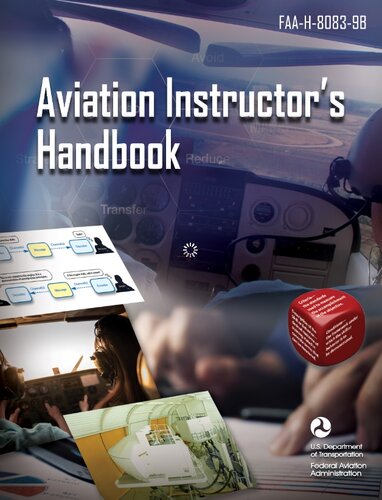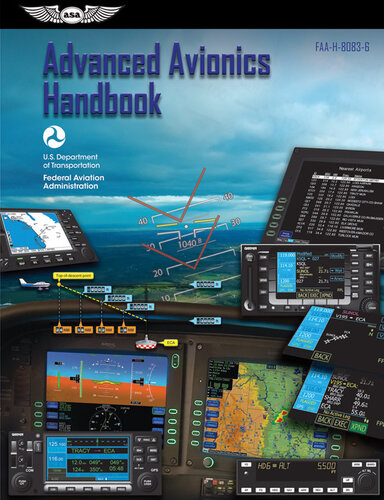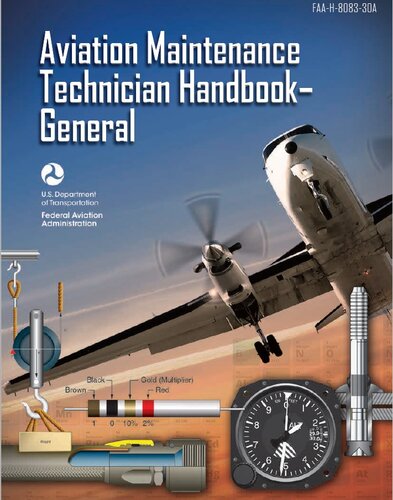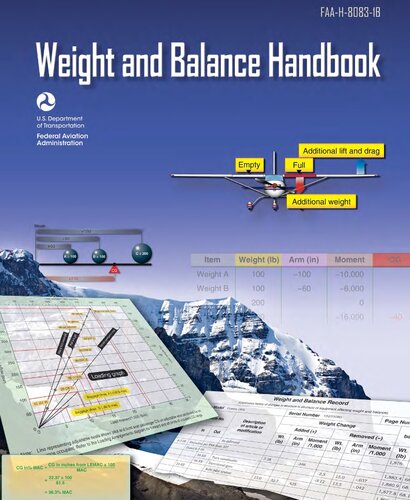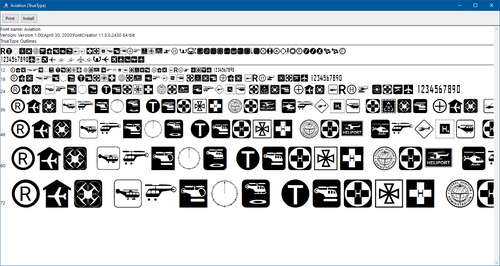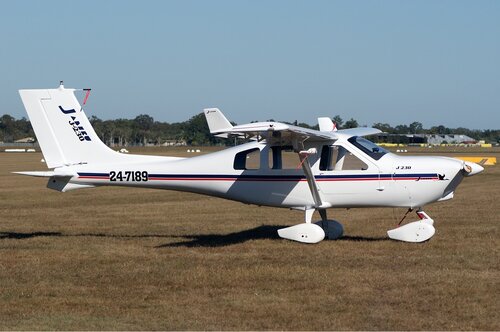-
Posts
9,287 -
Joined
-
Last visited
-
Days Won
108
Content Type
Profiles
Forums
Gallery
Downloads
Blogs
Events
Store
Aircraft
Resources
Tutorials
Articles
Classifieds
Movies
Books
Community Map
Quizzes
Videos Directory
Files posted by Admin
-
Pilot's Handbook of Aeronautical Knowledge 2023
By Admin in Book Downloads
Important FAA Handbook includes principles of flight, airplanes and engines, performance, weather, navigation, and more. (FAA-H-8083-25C)
Providing basic knowledge essential for all pilots, from beginning students through to the advanced certificates, this Federal Aviation Administration (FAA) publication introduces readers to the broad spectrum of knowledge required as they progress through pilot training. Studying this book, pilots gain the required knowledge to earn a certificate and understand aerodynamic theory associated with flight. Written for the pilot preparing for a Remote, Sport, Recreational, Private, Commercial, or Flight Instructor Pilot Certificate, it is a key reference for all the information necessary to operate an aircraft and to pass the FAA Knowledge Exam and Practical Test (checkride).
This invaluable learning tool begins with a basic introduction to flying and a history of flight, then explores the role of the FAA, criteria for earning the various pilot certificates, how to select a flight school and instructor, and the tests associated with earning a pilot certificate. Topics covered include aeronautical decision making, aircraft construction, principles of flight, aerodynamics of flight, flight controls, aircraft systems, flight instruments, flight manuals and other documents, weight and balance, aircraft performance, weather theory, aviation weather services, airport operations, airspace, navigation, and aeromedical factors. Appendices provide additional support including acronyms, abbreviations, NOTAM contractions, airport signs and markings, a glossary and index.
This 2023 Edition reflects the latest aviation industry procedures, equipment, techniques, regulations, and National Transportation Safety Board (NTSB) recommendations and is a key reference in the FAA Airman Certification Standards (ACS). Changes include updates to drugs and the impact on flight, nontowered airport operations, and attitude indicator pitch and bank limitations. Complete with chapter summaries and illustrated throughout with detailed, full-color drawings and photographs, this handbook functions like an “aviation encyclopedia” to expand pilot knowledge.
15 downloads
0 comments
Submitted
-
FAA Risk Management Handbook
By Admin in Book Downloads
This FAA handbook provides tools to help pilots determine and assess each situation for the safest possible flight with the least amount of risk. (FAA-H-8083-2A)
This FAA handbook provides tools to help pilots recognize and manage risk and presents definitive practical guidance on how to implement and conduct the “identify, assess, and mitigate” tasks identified in the Airman Certification Standards (ACS). Pilots who practice effective risk management have predetermined personal standards and have formed habit patterns and checklists to incorporate them. This handbook presents methods that pilots of all types of aircraft can use to manage the workloads associated with each phase of flight, resulting in a safer, more enjoyable, and less stressful experience for both themselves and their passengers.
In the last 20 years, approximately 85 percent of aviation accidents have been caused by “pilot error,” which can result from focusing primarily on the physical aspects of flying the aircraft. The certificated flight instructor (CFI) who integrates risk management into flight training teaches aspiring pilots how to be more aware of the potential risks in flying, clearly identify those risks, and manage them successfully—building a solid understanding of how to avoid the most common pilot errors and supporting a safety culture in aviation.
An important component to airman certification, risk management is applied by identifying, monitoring, and managing potential components that affect risk, thereby allowing the pilot to be better prepared to mitigate risk. This full-color manual covers subjects such as an introduction to risk management, personal minimums, identifying hazards and associated risks, assessing risk, mitigating risk, threat and error management, automation and flight path management, and aeronautical decision-making in flight. Appendices contain additional risk management training and tools, accident case studies, and risk management exercises applicable to small general aviation training aircraft, helicopters, and large turbine-powered aircraft. Helpful tools include chapter-end summaries, glossary, index, and internet resources throughout for additional resources and information.
5 downloads
0 comments
Submitted
-
Remote Pilot Small Unmanned Aircraft Systems
By Admin in Book Downloads
The Federal Aviation Administration (FAA) has published the Remote Pilot – Small Unmanned Aircraft Systems (sUAS) Study Guide to communicate the knowledge areas you need to study to prepare to take the Remote Pilot Certificate with an sUAS rating airman knowledge test.
Topics include: applicable regulations; airspace classification, operating requirements, and flight restrictions; aviation weather sources; effects of weather on performance; aircraft loading; emergency procedures; crew resource management; radio communication procedures; physiological factors affecting pilot performance; aeronautical decision-making and judgement; airport operations; maintenance and preflight inspection procedures.
The FAA version is available for free download on the Recreational Flying website for registered users
6 downloads
0 comments
Submitted
-
Helicopter Flying Handbook
By Admin in Book Downloads
This is the FAA’s primary resource for helicopter operations knowledge; it is essential reading for applicants preparing for knowledge exams with a helicopter class rating. (FAA-H-8083-21B)
This is the FAA's primary resource for helicopter operations knowledge; it is essential reading for applicants preparing for the exams for private, commercial, or flight instructor pilot certificates with a helicopter class rating. In addition to a basic introduction to the helicopter, readers will find chapters on aerodynamics, flight controls, systems, performance, ground procedures, basic and advanced flight maneuvers, emergencies and hazards, attitude instrument flying, night operations, and aeronautical decision-making.
Previously titled Rotorcraft Flying Handbook, this new edition is designed for use by flight instructors, pilots preparing for a helicopter rating FAA Knowledge and Practical exam, and helicopter-rated pilots wishing to improve their knowledge.
1 download
0 comments
Submitted
-
Aviation Maintenance Technician: Powerplant
By Admin in Book Downloads
WARNING- This download file is 204mb
This FAA handbook provides knowledge for earning the Aviation Mechanic certificate, Powerplant section. The FAA Powerplant test questions are drawn from here. (FAA-H-8083-32B)
The FAA Aviation Maintenance Technician Handbook—Powerplant is designed for use by instructors and applicants preparing for the FAA Knowledge Exam and Oral & Practical (O&P) Exams required to obtain an Aviation Mechanic Certificate with Airframe and/or Powerplant Ratings (also called an A&P license). Developed as one in a series of handbooks for this purpose, this is an effective text for both students and instructors and will also serve as an invaluable reference guide for current technicians who wish to improve their knowledge.
The powerplant handbook provides basic information on principles, fundamentals, and technical procedures in the subject matter areas relating to the aircraft powerplant. Subjects covered include: aircraft engines, engine fuel and fuel metering systems, induction and exhaust systems, engine ignition and electrical systems, engine starting systems, lubrication and cooling systems, propellers, engine removal and replacement, engine fire protection systems, engine maintenance and operation, and light-sport aircraft engines.
Reflecting current technologies, equipment and procedures, the 2023 edition provides the guidance to support the FAA Aviation Mechanic Airman Certification Standards (ACS) and 14 CFR Part 147 Aviation Maintenance Technician Schools. Illustrated throughout with detailed, full-color drawings and photographs, the handbook also offers a comprehensive glossary and index.
8 downloads
0 comments
Submitted
-
Aviation Maintenance Technician: General
By Admin in Book Downloads
This FAA handbook provides knowledge for earning the Aviation Mechanic certificate, General section. The FAA General test questions are drawn from this book. (FAA-H-8083-30B)
The FAA Aviation Maintenance Technician Handbook—General is designed for use by instructors and applicants preparing for the FAA Knowledge Exam and Oral & Practical (O&P) Exams required to obtain an Aviation Mechanic Certificate with Airframe and/or Powerplant Ratings (also called an A&P license). Developed as one in a series of handbooks for this purpose, this is an effective text for both students and instructors and will also serve as an invaluable reference guide for current technicians who wish to improve their knowledge.
This general handbook provides the basic information on principles, fundamentals, and technical procedures in the subject matter areas relating to the aviation mechanic general curriculum. Subjects covered include: safety, ground operations, and servicing; regulations, maintenance forms, records, and publications; mathematics in aviation maintenance; aircraft drawings; physics for aviation; aircraft weight and balance; aircraft materials, hardware, and processes; cleaning and corrosion control; fluid lines and fittings; inspection concepts and techniques; hand tools and measuring devices; fundamentals of electricity and electronics; mechanic privileges and limitations; and human factors.
Reflecting current technologies, equipment, and procedures, this 2023 edition provides guidance to support the FAA Aviation Mechanic Airman Certification Standards (ACS) and 14 CFR Part 147 Aviation Maintenance Technician Schools. Illustrated throughout with detailed, full-color drawings and photographs, the handbook also offers a comprehensive glossary and index.
18 downloads
0 comments
Submitted
-
Aviation Maintenance Technician: Airframe
By Admin in Book Downloads
This FAA handbook provides knowledge for earning the Aviation Mechanic certificate, Airframe section. The FAA Airframe test questions are drawn from here. (FAA-H-8083-31B)
The FAA Aviation Maintenance Technician Handbook—Airframe is designed for use by instructors and applicants preparing for the FAA Knowledge Exam and Oral & Practical (O&P) Exams required to obtain an Aviation Mechanic Certificate with Airframe and/or Powerplant Ratings (also called an A&P license). Developed as one in a series of handbooks for this purpose, this is an effective text for both students and instructors and will also serve as an invaluable reference guide for current technicians who wish to improve their knowledge.
The airframe handbook provides the basic information on principles, fundamentals, and technical procedures in the subject matter areas relating to airframe systems and structures. Subjects covered include aircraft structures, aerodynamics, aircraft assembly and rigging, aircraft fabric covering, aircraft metal structural repair, aircraft welding, aircraft wood and structural repair, aircraft composite materials, aircraft painting and finishing, aircraft electrical system, aircraft systems, communication and navigation, hydraulic and pneumatic power systems, aircraft landing gear systems, aircraft fuel systems, ice and rain protection, cabin environmental control systems, and fire protection systems.
Reflecting current technologies, equipment, and procedures, the 2023 edition provides guidance to support the FAA Aviation Mechanic Airman Certification Standards (ACS) and 14 CFR Part 147 Aviation Maintenance Technician Schools. Illustrated throughout with detailed, full-color drawings and photographs, the handbook also offers a comprehensive glossary and index.
7 downloads
0 comments
Submitted
-
Aircraft Inspection, Repair & Alterations 1B-2B
By Admin in Book Downloads
AC 43.13-1B and AC 43.13-2B are current in 2023.
This handbook for Aviation Maintenance Technicians (AMTs), repair stations, aircraft owners and homebuilders details the standards for acceptable methods, techniques, and practices for the inspection, repair, and alteration of aircraft. It is a combination of the two most important Advisory Circulars (ACs) written by the Federal Aviation Administration (FAA) on this topic?--namely, "Acceptable Methods, Techniques, and Practices: Aircraft Inspection and Repair" (AC 43.13-1B) and "Acceptable Methods, Techniques and Practices: Aircraft Alterations" (AC 43.13-2B)--printed and bound into one volume.
AC 43.13-1B provides details on the materials and practices, health and safety, inspection, repair, and finishes for wood structures, fabric covering, fiberglass and plastics, and metal structures, welding and brazing. It includes chapters dedicated to nondestructive inspection (NDI), corrosion, inspection and protection, aircraft hardware, control cables and turnbuckles, engines, fuel, exhaust, propellers, aircraft systems and components, weight and balance, electrical systems, avionics, and human factors.
AC 43.13-2B is a manual filled with details and instructions for the installation of aircraft components and systems, such as communications, navigation, and emergency systems, anticollision and supplementary lights, skis, oxygen systems in nonpressurized aircraft, rotorcraft external-load devices, cargo slings and external racks, glider and banner tow-hitches, aircraft batteries and more, including guidance on adding or relocating instruments.
These combined manuals provide this pertinent information where no manufacturer repair or maintenance instructions exist. The details and standards for methods and practices covered are applicable to non-pressurized civil aircraft with a gross weight of 12,500 pounds or less. Illustrated throughout; includes a glossary, and a list of useful acronyms and abbreviations.
10 downloads
0 comments
Submitted
-
Flight Instructor Manual - CASA
By Admin in Book Downloads
The manual is a guide for flight instructors on conducting flight training in aeroplanes for a pilot licence and includes an outline on the air exercises and principles and methods of instruction relevant to each lesson.
10 downloads
0 comments
Submitted
-
Seaplane, Skiplane and Float/Ski Equipped Helicopter Operations
By Admin in Book Downloads
From the Federal Aviation Administration, Seaplane, Skiplane, and Float/Ski Equipped Helicopter Operations Handbook provides the most up-to-date, definitive information on piloting water-related aircraft. Along with full-color photographs and illustrations, detailed descriptions make complicated tasks easy-to-understand, while the index and glossary provide the perfect reference for finding any topic and solving any issue.
The Federal Aviation Administration leaves no question unanswered in the most complete book on how to fly water-related aircraft available on the market. Seaplane, Skiplane, and Float/Ski Equipped Helicopter Operations Handbook is the perfect addition to the bookshelf of all aircraft enthusiasts, FAA fans, and novice and experienced pilots alike.
1 download
0 comments
Submitted
-
Rotorcraft Flying Handbook
By Admin in Book Downloads
The Rotorcraft Flying Handbook is designed as a technical manual for applicants who are preparing for their private, commercial, or flight instructor pilot certificates with a helicopter or gyroplane class rating. Certificated flight instructors may find this handbook a valuable training aid, since detailed coverage of aerodynamics, flight controls, systems, performance, flight maneuvers, emergencies, and aeronautical decision making is included.
Topics, such as weather, navigation, radio navigation and communications, use of flight information publications, and regulations are available in other Federal Aviation Administration (FAA) publications. This handbook conforms to pilot training and certification concepts established by the FAA. There are different ways of teaching, as well as performing flight procedures and maneuvers, and many variations in the explanations of aerodynamic theories and principles.
This handbook adopts a selective method and concept to flying helicopters and gyroplanes. The discussion and explanations reflect the most commonly used practices and principles. Occasionally, the word "must" or similar language is used where the desired action is deemed critical. The use of such language is not intended to add to, interpret, or relieve a duty imposed by Title 14 of the Code of Federal Regulations (14 CFR). This handbook is divided into two parts. The first part, chapters 1 through 14, covers helicopters, and the second part, chapters 15 through 22, covers gyroplanes. The glossary and index apply to both parts. It is essential for persons using this handbook to also become familiar with and apply the pertinent parts of 14 CFR and the Aeronautical Information Manual (AIM). Performance standards for demonstrating competence required for pilot certification are prescribed in the appropriate rotorcraft practical test standard. This handbook supersedes Advisory Circular (AC) 61-13B, Basic Helicopter Handbook, dated 1978. In addition, all or part of the information contained in the following advisory circulars are included in this handbook: AC 90- 87, Helicopter Dynamic Rollover; AC 90-95, Unanticipated Right Yaw in Helicopters; AC 91-32B, Safety in and around Helicopters; and AC 91-42D, Hazards of Rotating Propeller and Helicopter Rotor Blades. FAA-H-8083-21
14 downloads
0 comments
Submitted
-
Powered Parachute Flying Handbook
By Admin in Book Downloads
A powered parachute (PPC) is a category of aircraft that requires the pilot to inflate the wing (parachute) and then control the aircraft with a “pendulum configuration” of the cart hanging below it. This unique and fun aircraft is an evolution of ultralight aircraft including the parachute, paraglider, and powered paraglider. This new FAA handbook introduces the basic pilot skills and knowledge essential for piloting powered parachutes. It benefits student pilots just beginning their PPC endeavors, as well as those pilots wishing to improve their flying proficiency and aeronautical knowledge, and flight instructors engaged in the instruction of both students and licensed pilots.
Here the pilot is shown the realm of powered parachute flight and given information and guidance in the performance of procedures and maneuvers required for pilot certification. The handbook begins with an introduction to powered parachutes, including a history of this unique aircraft. Chapters cover aerodynamics, components and systems, powerplants, preflight and ground operations, basic flight maneuvers, takeoffs and departure climbs, airspace, ground reference maneuvers, airport operations, approaches and landings, and night, abnormal, and emergency procedures.
This book is the official FAA source for learning to fly powered parachutes and many test questions for the powered parachute FAA Knowledge Exam come from this reference. Illustrated throughout with full-color graphics and photography, indexed, soft cover, 160 pages.
8 downloads
0 comments
Submitted
-
Instrument Procedures Handbook - FAA-H-8083-16B
By Admin in Book Downloads
The Instrument Procedures Handbook is a technical reference manual for professional pilots who operate under instrument flight rules (IFR). It provides real-world guidance on how instrument-rated pilots can best use the system they've trained for, as well as in-depth coverage of instrument charts and procedures for IFR takeoff, departure, en route, arrival, approach, and landing.
For every navigation receiver and phase of flight, this handbook details the required precision that is needed to stay within protected airspace and make a successful approach. Safety information for relevant subjects such as runway incursion, land hand hold short operations, controlled flight into terrain, and human factors issues are covered here. the emphasis is on airplane operations, but the book also contains a chapter dedicated to helicopter instrument procedures.
The Instrument Procedures Handbook expands on the FAA's Instrument Flying Handbook (FAA-H-8083-15). This handbook introduces advanced information for IFR operations. Airline Transport Pilots (ATP), Instrument pilots, Instrument Flight Instructors (CFIIs), and students preparing for the instrument rating will find this a valuable resource in studying for the FAA Knowledge Exams and getting ready for their checkrides. Illustrated throughout with detailed, full-color drawings and photographs; also includes acronyms list, glossary and index.
Last updated in 2015, this 2017 edition includes editorial wording changes for clarity and consistency, updated terminology to reflect current rules and procedures, while updated graphics and illustrations improve the appearance, readability and understanding. In-depth sections on instrument charts and procedures cover all phases of flight from takeoff to landing. Each topic covered is well-detailed and explained in user-friendly terms.
Regulatory changes occur on a frequent basis, and safe flight requires pilots are aware of current procedures. This book covers all of the information needed to operate safely within the National Airspace System. In-depth sections on instrument charts and procedures cover all phases of flight from takeoff to landing. Each topic covered is well-detailed and explained in user-friendly terms, while updated graphics and illustrations improve the appearance, readability and understanding.
FAA-H-8083-16B, effective October 2017
ISBN 9781619546332
312 pages, color.
4 downloads
0 comments
Submitted
-
Updated
-
Instrument Flying Handbook
By Admin in Book Downloads
This is the FAA's official primary pilot resource for instrument flight rules and training, with chapters on flight instruments, navigation, emergency operations, and much more.
It covers everything pertinent to operating an aircraft, both in instrument meteorological conditions (IMC) and without reference to outside visuals, relying solely on the information gleaned from the cockpit. Information applies to both analog and electronic flight displays and is organized into separate coverage of the traditional and pictorial displays.
Instrument Flying Handbook includes chapters on:
National airspace system The air traffic control system Human factors Aerodynamics, Flight instruments, Flight maneuvers for IFR operations Navigation Emergency operations, Helicopter operations And more.
Advanced systems are covered, including flight management systems, the primary flight display (PFD) and multi-function display (MFD), synthetic vision, and traffic advisory systems. Instrument clearance shorthand is discussed, and an instrument training lesson guide is provided.
The Instrument Flying Handbook is designed for use by flight instructors, pilots preparing for the Instrument Rating FAA Knowledge and Practical Exams, and instrument-rated pilots looking for a refresher or preparing for an Instrument Proficiency Check (IPC). This edition features with full-color illustrations and diagrams, along with a comprehensive glossary and index.
13 downloads
Submitted
-
Glider Flying Handbook
By Admin in Book Downloads
This is the FAA's primary technical manual for the required aeronautical knowledge necessary to operate a glider. It is essential reading for applicants preparing for the exams for private, commercial, or flight instructor pilot certificates with a glider rating, as well as for currently certificated glider pilots who wish to improve their knowledge.
Flight instructors will find this handbook a valuable training aid since it includes detailed coverage of aeronautical decision making, components and systems, aerodynamics, flight instruments, performance limitations, ground operations, flight maneuvers, traffic patterns, emergencies, soaring weather, soaring techniques, and cross-country flight. In addition, readers will find information on towing, human factors, and the Soaring Safety Foundation (SSF) Safety Advisory 00-1, Glider Critical Assembly Procedures, which covers ensuring aircraft airworthiness. Illustrated throughout with detailed, full-color drawings and photographs, the guide also includes a comprehensive glossary and an index.
5 downloads
Submitted
-
Aviation Weather Handbook
By Admin in Book Downloads
Aviation Weather Handbook (Electronic)
THE ESSENTIAL FULL-COLOR WEATHER HANDBOOK FOR PILOTS!
This handbook consolidates the weather information from six FAA weather-related advisory circulars (AC) into one useful publication.
The following ACs will remain in effect, but they will eventually be cancelled and replaced this handbook:
AC 00-06, Aviation Weather AC 00-24, Thunderstorms AC 00-30, Clear Air Turbulence Avoidance AC 00-45, Aviation Weather Services AC 00-54, Pilot Windshear Guide AC 00-57, Hazardous Mountain Winds
This handbook was designed as a technical reference for all who operate in the National Aerospace System (NAS). Pilots, dispatchers, and operators will find this handbook a valuable resource for flight planning and decision making. With a complete guide to the United States' aviation weather program, products, and services, it also documents weather theory and its application to aviation. The objective of this handbook is to help the pilot and operator understand the basics of weather, aviation weather hazards, and aviation weather products.
Beginners and advanced pilots alike will find the Aviation Weather Handbook to be a critical resource for all aviation weather subjects.
10 downloads
0 comments
Submitted
-
Aeronautical chart user guide - Air Services
By Admin in Book Downloads
This Chart User Guide is an introduction to the Airservices range of aeronautical charts. It has been designed to be used by new pilots as a learning tool
6 downloads
0 comments
Submitted
-
Aeronautical Chart User's Guide
By Admin in Book Downloads
FREE DOWNLOAD
Aeronautical Chart User's Guide
by: FAA Aeronautical Information Service
This Chart Users' Guide is an introduction to the Federal Aviation Administration's (FAA) aeronautical charts and publications. It is useful to new pilots as a learning aid, and to experienced pilots as a quick reference guide.
The FAA is the source for all data and information utilise in the publishing of aeronautical charts through authorised publishers for each stage of Visual Flight Rules (VFR) and Instrument Flight Rules (IFR) air navigation including training, planning, and departures, en-route (for low and high altitudes), approaches, and taxiing charts.
All information in this guide is effective as of 30 November 2023. All graphics used in this guide are for educational purposes. Chart symbology may not be to scale. Please do not use them for flight navigation.
0 downloads
0 comments
Submitted
-
Aviation Instructor's Handbook
By Admin in Book Downloads
Designed for ground instructors, flight instructors, and aviation maintenance instructors, this Aviation Instructor’s Handbook was developed by the Federal Aviation Administration (FAA) in cooperation with aviation educators and industry to help beginning instructors understand and apply the fundamentals of instruction. This handbook provides up-to-date information on learning and teaching, and how to relate this information to the task of teaching aeronautical knowledge and skills to students. Experienced aviation instructors will also find the information useful for improving their effectiveness in training activities. This book is a key reference tool to all the information necessary for operating as an authorized flight instructor and passing the Fundamentals of Instructing FAA Knowledge Exam. Subjects covered include human behavior, the learning process, effective communication, the teaching process, assessments, planning instruction activity, instructor responsibilities, techniques of flight instruction, and risk management. Appendices include a comprehensive bibliography of references, information on how to develop a test item bank, certificates and ratings endorsements, personal minimums checklist, flight instructor endorsements, and relationships of decision-making models. Newly illustrated with full-color drawings and photographs.17 downloads
0 comments
Submitted
-
Advanced Avionics Handbook
By Admin in Book Downloads
This new FAA handbook (FAA-H-8083-6, Effective 2009) provides general aviation users with comprehensive information on the advanced avionics equipment available in technically advanced aircraft (TAA). VFR and IFR operations in aircraft with the latest integrated “glass cockpit” instrumentation are covered here, helping pilots understand which advanced avionics systems to use and when. Readers will learn the “knob-ology” associated with operating cockpit-computers, including data entry, maintaining current databases, and accessing information from the various screens. Common pilot errors, catching those errors, and instrument failures are discussed, as well as recommendations for using standby instruments during both normal and emergency operations. Each phase of flight is covered, so readers will know how to execute departure, enroute and approach procedures using glass cockpit instrumentation. Subjects covered include the Primary Flight Display (PFD), Multi-Function Display (MFD), moving maps, terrain, cockpit weather, traffic data, fuel management systems, and electronic charts and checklists. Essential skills checklists and summaries conclude each chapter for a comprehensive review and quick-check reference. Chapter 01: Introduction to Advanced Avionics
Chapter 02: Electronic Flight Instruments
Chapter 03: Navigation
Chapter 04: Automated Flight Control
Chapter 05: Information Systems
Essential Skills Checklist & Glossary You also need to Download the Errata Sheet
13 downloads
Updated
-
Aviation Maintenance FAA-H-8083-30A
By Admin in Book Downloads
This download forms a part of the John Brandon Flying Tutorials - Getting Started - 1.9 Owner-pilot maintenance of RA-Aus aircraft
The Aviation Maintenance Technician Handbook – General was developed as one of a series of three handbooks for persons preparing for mechanic certification with airframe or powerplant ratings, or both. It is intended that this handbook will provide basic information on principles, fundamentals, and technical procedures in the subject matter areas common to both the airframe and powerplant ratings. Emphasis in this volume is on theory and methods of application. The handbook is designed to aid students enrolled in a formal course of instruction preparing for FAA certification as a maintenance technician, as well as for current technicians who wish to improve their knowledge. This volume contains information on mathematics, aircraft drawings, weight and balance, aircraft materials, processes and tools, physics, electricity, inspection, ground operations, and FAA regulations governing the certification and work of maintenance technicians. New to this volume is a section addressing how successful aviation maintenance technicians incorporate knowledge and awareness of ethics, professionalism, and human factors in the field.
NOTE: this is a 60mb download as a .zip file
18 downloads
0 comments
Updated
-
Weight and Balance Handbook
By Admin in Book Downloads
FAA 8083-1B reprint contains helpful information on weight and balance for pilots, flight engineers, and aviation maintenance technicians (AMTs). Weight and balance is one of the most important factors affecting safety of flight. An overweight aircraft, or one whose center of gravity is outside the allowable limits, is inefficient and dangerous to fly. The responsibility for proper weight and balance control begins with the engineers and designers and extends to the pilot who operates and the aviation maintenance technician who maintains the aircraft. This book explains in detail the process to determine the weight and balance of any aircraft. This new edition, has been updated to include information on new Light Sport Aircraft (LSA) and Very Light Jet (VLJ) categories. Applicable to both airplanes and helicopters, this book is a primary reference for all FAA Knowledge Exams for both pilots and mechanics.35 downloads
0 comments
Updated
-
Aviation Font
A font that can be added to Windows to give you access to many different small aviation images that you can use in documents
22 downloads
0 comments
Submitted
-
Jabiru 200 and 400 Checklist
The J230 is a two-seat development of the four-seat Jabiru J430, optimized for the US light-sport category, which is restricted to two seats. The J230 uses the same wings and fuselage as the J430, but deletes the back seats, leaving a large baggage compartment. While the J430 has a gross weight of 1,540 lb (699 kg), the J230 is restricted to a gross weight of 1,320 lb (599 kg).
The J230 features a strut-braced high-wing, a two-seats-in-side-by-side configuration enclosed cockpit with a large rear baggage compartment, fixed tricycle landing gear and a single engine in tractor configuration. The cockpit is 44 in (112 cm) wide
The aircraft is made from composites. Its 31.3 ft (9.5 m) span wing has an area of 103 sq ft (9.6 m2) and mounts flaps. The aircraft's recommended installed engine power 120 hp (89 kW) and the standard engine used is the 120 hp (89 kW) Jabiru 3300 four-stroke powerplant. Construction time from the supplied kit is estimated as 600 hours. The design is approved for night flying.
The J230 has a standard empty weight of 816 lb (370 kg), which combined with a full fuel capacity of 216 lb (98 kg) and a gross weight of 1,320 lb (599 kg) leaves 288 lb (131 kg) for crew, passenger and cargo with full fuel.
The J230 is listed on the Federal Aviation Administration's list of approved special light-sport aircraft.
20 downloads
0 comments
Submitted


